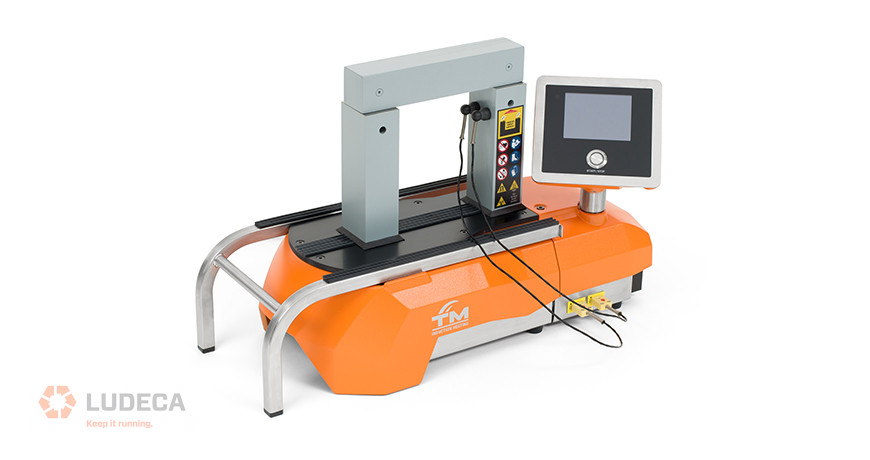In industrial and mechanical settings, equipment reliability and efficiency are paramount. One critical aspect that ensures the longevity and optimal performance of rotating machinery is proper bearing installation. A bearing heater is a powerful tool used to install bearings effectively without damaging them. This guide explores how to maximize efficiency using a bearing heater, its benefits, and best practices for achieving accurate and long-lasting bearing fits.
Why Correct Bearing Installation Matters
Bearings are fundamental components in machinery, ensuring smooth rotational movement while supporting significant loads. However, improper installation can lead to premature failure, increased maintenance costs, and even total equipment breakdowns. Using the right tools for bearing installation, such as a bearing heater, helps avoid common problems like misalignment or excessive wear.
The Importance of Precision in Bearing Installation
Precision is key when installing bearings. Misaligned or improperly fitted bearings can cause the equipment to vibrate, leading to increased energy consumption and accelerated wear. Bearing heaters provide a controlled method of expanding the bearing to fit over the shaft, ensuring a precise and secure fit.
What is a Bearing Heater?
A bearing heater is a specialized tool designed to heat bearings evenly, allowing them to expand and slip onto a shaft without the need for force or damaging impacts. Once the bearing cools, it contracts and forms a tight, interference fit with the shaft, ensuring a secure attachment.
How Does a Bearing Heater Work?
Bearing heaters use either induction or resistive heating methods to heat the bearing evenly. Induction heating is more common due to its efficiency and ability to heat the bearing rapidly without direct contact. The bearing is placed on the heater, which then uses electromagnetic induction to heat the bearing core, expanding it to the appropriate size for installation.
Key Features of Bearing Heaters
- Temperature Control: Most bearing heaters come with precise temperature settings, allowing you to control the heating process and prevent overheating.
- Rapid Heating: Modern bearing heaters are designed to heat bearings quickly, which minimizes downtime and increases productivity.
- Safety Features: These devices often include automatic shut-off systems to prevent overheating and ensure operator safety.
Benefits of Using a Bearing Heater
Using a bearing heater provides several advantages over traditional installation methods, such as hammers or presses. These benefits include:
1. Extended Bearing Life
By using a controlled heating method, bearing heaters reduce the risk of damage during installation. Overheating or using excessive force can lead to bearing defects, ultimately shortening their lifespan. Proper heating ensures a secure fit without damaging the bearing’s integrity.
2. Improved Efficiency
Heating a bearing ensures that it fits perfectly onto the shaft, eliminating the need for forceful mechanical methods. This reduces the risk of misalignment and decreases energy consumption during the equipment’s operation. In turn, the machine runs more smoothly, requiring less energy to maintain optimal performance.
3. Minimized Equipment Downtime
Bearing heaters work quickly, heating bearings in a fraction of the time compared to traditional methods. This significantly reduces equipment downtime, allowing for faster installations and getting machinery back online faster.
4. Increased Worker Safety
Manual methods of bearing installation, such as hammers or mallets, pose a risk to worker safety. Bearing heaters eliminate the need for forceful handling, reducing the risk of injury to workers and providing a safer work environment.
How to Maximize Efficiency with a Bearing Heater
To get the most out of your bearing heater and ensure maximum efficiency in your operations, consider these best practices:
1. Select the Right Bearing Heater
Choosing the correct bearing heater for your specific application is crucial. Factors to consider include the size of the bearings, the type of heating method (induction or resistive), and the temperature control features. Ensure that the heater you choose is compatible with the size and type of bearings you’re working with.
2. Follow Manufacturer’s Instructions
While bearing heaters are straightforward to use, it’s essential to follow the manufacturer’s guidelines. This ensures that the bearings are heated to the correct temperature and installed without damage.
3. Monitor Temperature Settings
It’s vital to monitor the temperature during the heating process. Overheating can damage the bearing, while underheating may result in an improper fit. Most modern bearing heaters come with built-in temperature sensors that allow you to keep track of the temperature, ensuring accuracy.
4. Use Proper Handling Techniques
Once the bearing has reached the desired temperature, handle it carefully using heat-resistant gloves. Align the bearing properly with the shaft and allow it to cool naturally to achieve a tight, interference fit.
Common Mistakes to Avoid
While bearing heaters simplify the installation process, there are some common mistakes that operators should avoid to maximize efficiency:
- Overheating the Bearing: Overheating can damage the bearing’s structure and lead to premature failure. Always use the recommended temperature settings.
- Using Improper Tools: Never use mechanical methods to install a bearing that has been heated. Allow the bearing to naturally fit onto the shaft without additional force.
- Rushing the Process: While bearing heaters work quickly, it’s essential to allow the bearing to reach the appropriate temperature before attempting installation.
Conclusion
Investing in a bearing heater can significantly enhance your equipment’s efficiency and prolong the lifespan of its components. By providing a controlled, precise heating method, a bearing heater ensures optimal bearing installation, reducing the risk of damage and extending the bearing’s operational life. Implementing best practices and avoiding common mistakes will further maximize the benefits of using this essential tool in your industrial operations.
For more information on bearing heaters and their applications, you can check out this bearing heater guide.
By integrating these tools into your maintenance processes, you can reduce downtime, improve equipment reliability, and boost overall productivity.
